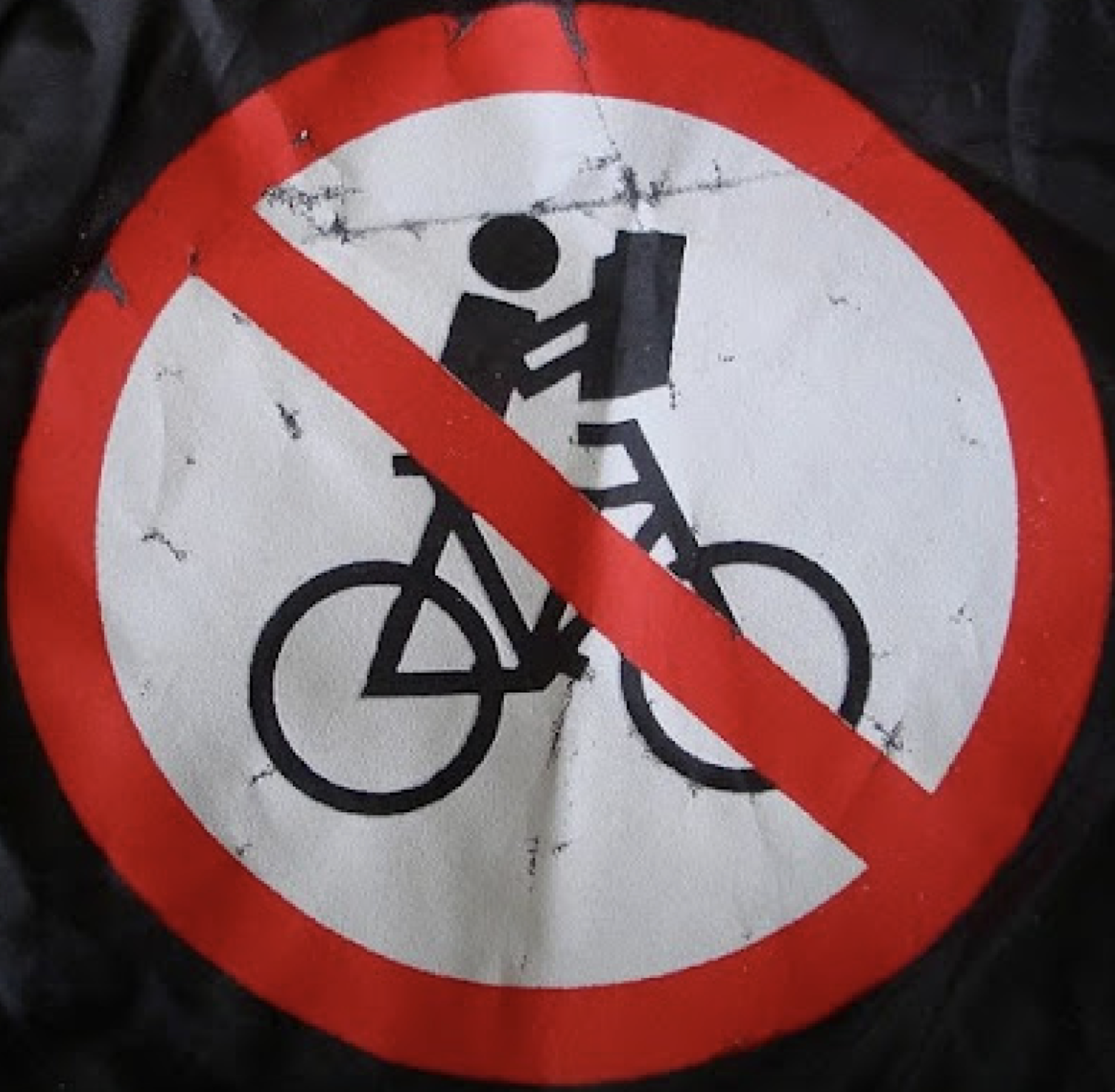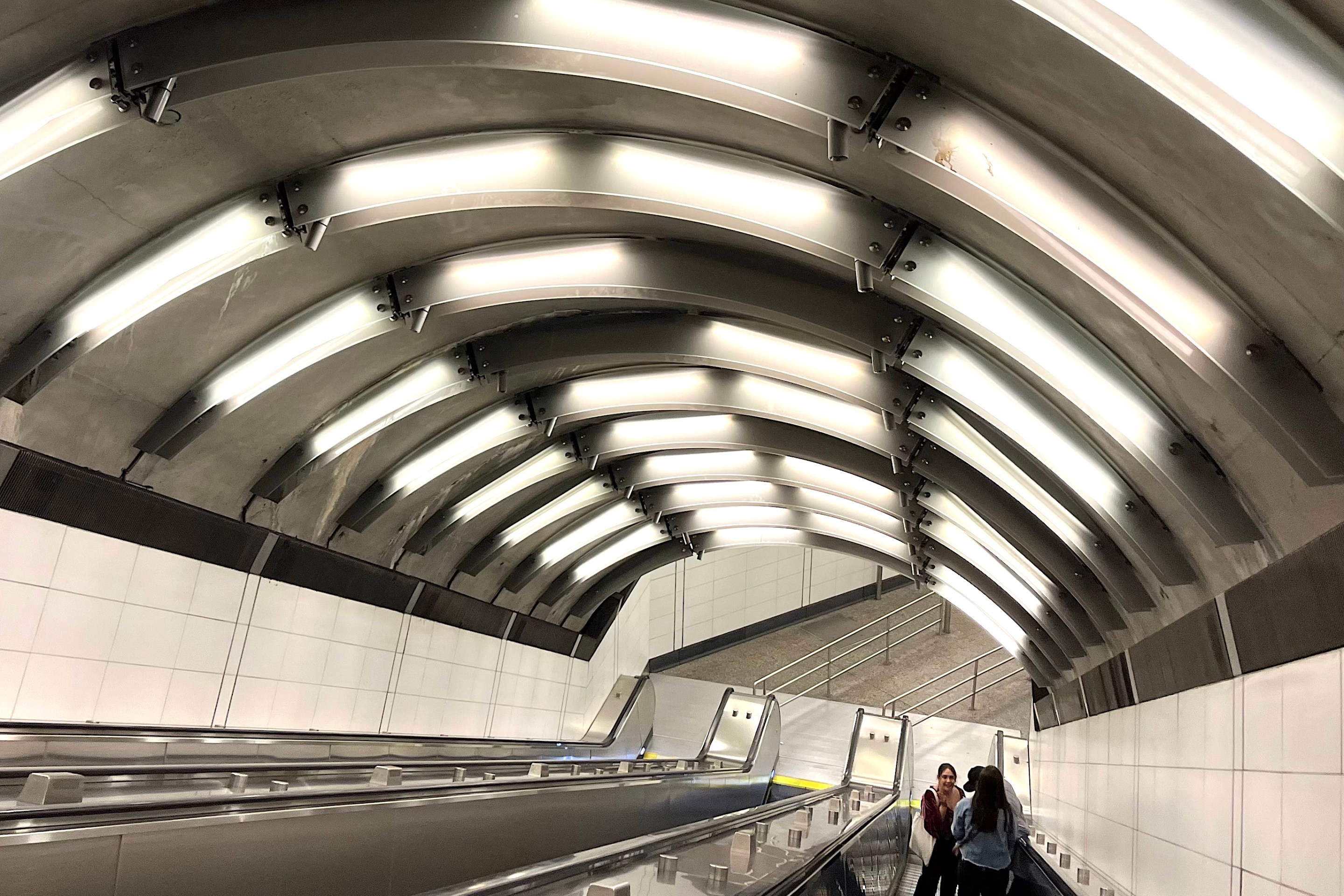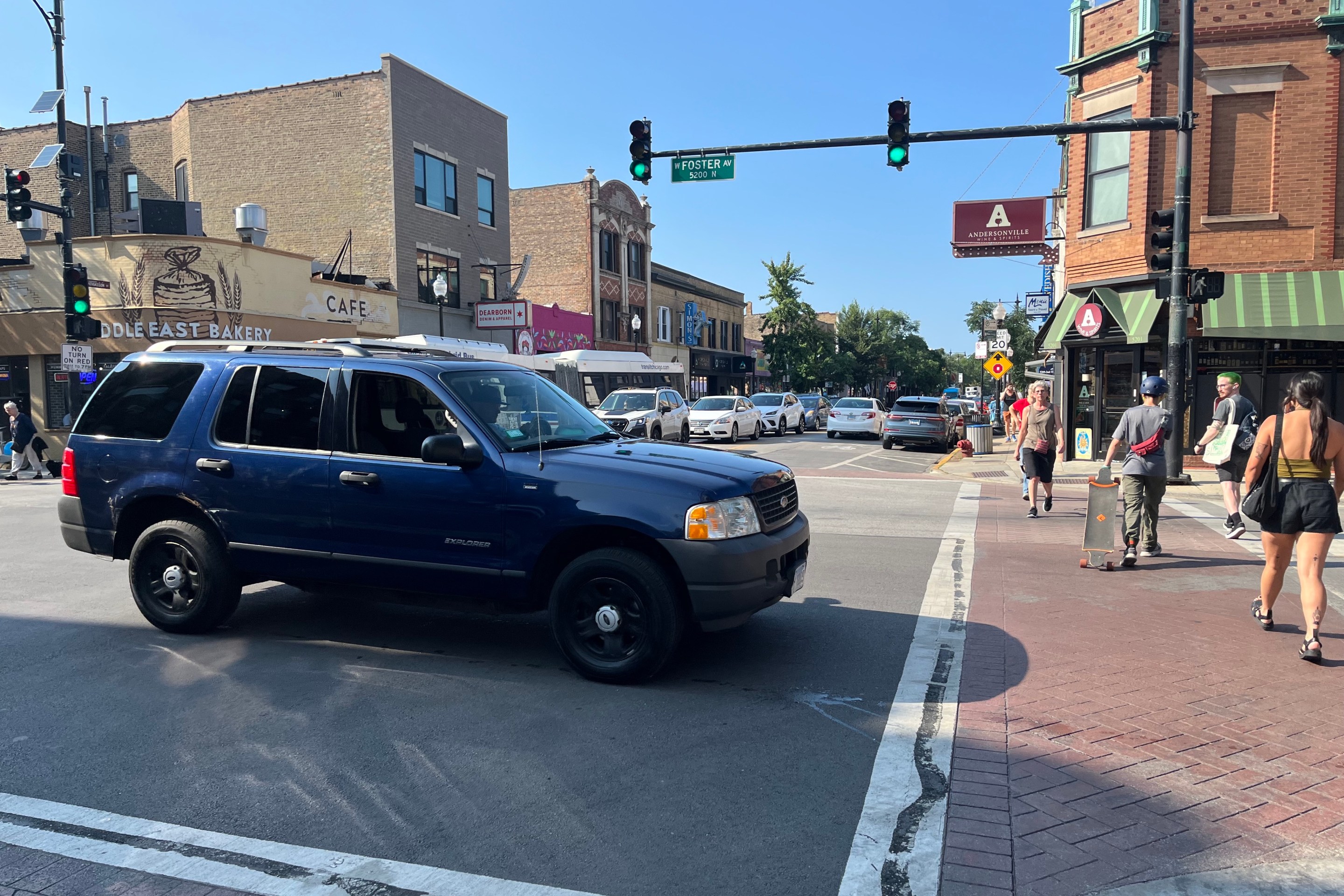In summer 2017 the Chicago Department of Transportation did a quick-and-cheap safety redesign of the Milwaukee Avenue corridor in Wicker Park and Bucktown. The department used street paint and plastic posts to create sidewalk bump-outs and close dangerous "slip lanes" that had allowed drivers to whip around corners. It added new crosswalks and green bike boxes at the six-way North/Damen/Milwaukee intersection. And, since Milwaukee is too narrow in this part of town for striping standard bike lanes without stripping lots of parking -- politically difficult on this retail-dense strip -- CDOT experimented with installing bike lanes with a dashed line on the left side.
At today's Mayor's Bicycle Advisory Council Meeting, CDOT deputy commissioner Luann Hamilton announced that the department has almost completed an evaluation of this "rapid delivery project" and shared a few stats from the upcoming report.
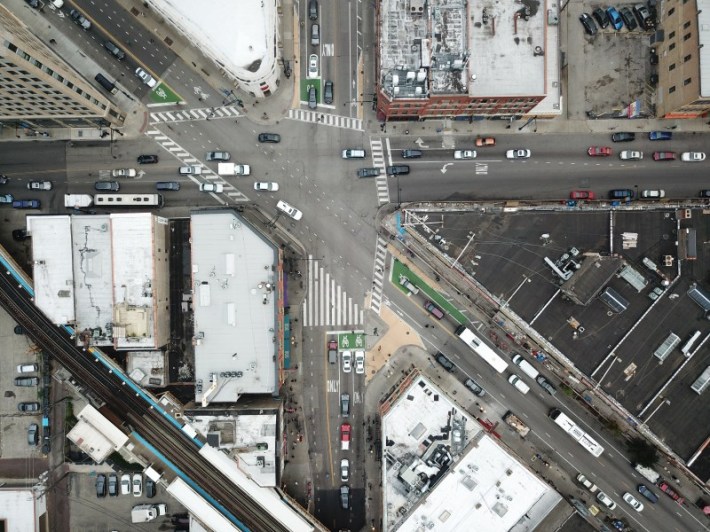
While some commenters on Streetsblog previously argued that striping the dashed bike lanes on the narrow street would actually make cyclists less safe because it would encourage them to ride closer to parked cars, putting them in danger of being doored, CDOT's counts show that's not the case. It turns out that 52 percent fewer cyclists are riding in the door zone nowadays than before the lanes were striped. That doesn't surprise me because, in my experience, drivers are doing a pretty good job of staying out of the lanes, which allows people on bikes to ride further to the left. Indeed, Hamilton said, 37 percent fewer motorists were observed driving in the bike space than before the striping.
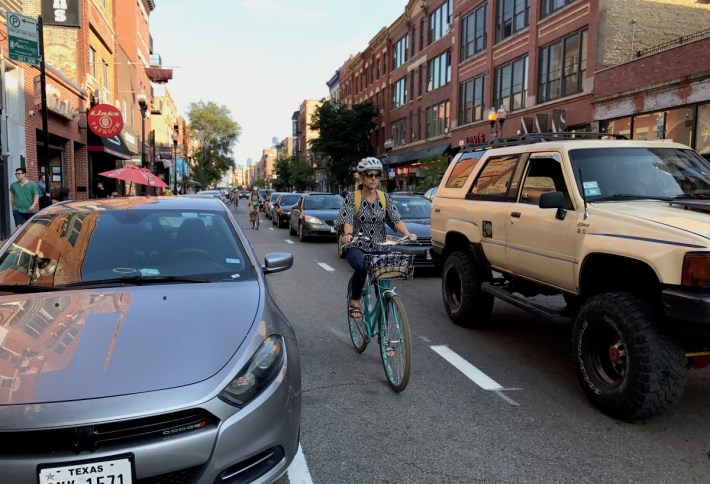
At locations where new bump-outs and zebra-stripe crosswalks were added, 10 percent more motorists are yielding to pedestrians in the crosswalk than before. And the number of people driving at or below 20 mph has increased by 16 percent since the speed limit on the corridor was lowered to 20 mph as part of the project.
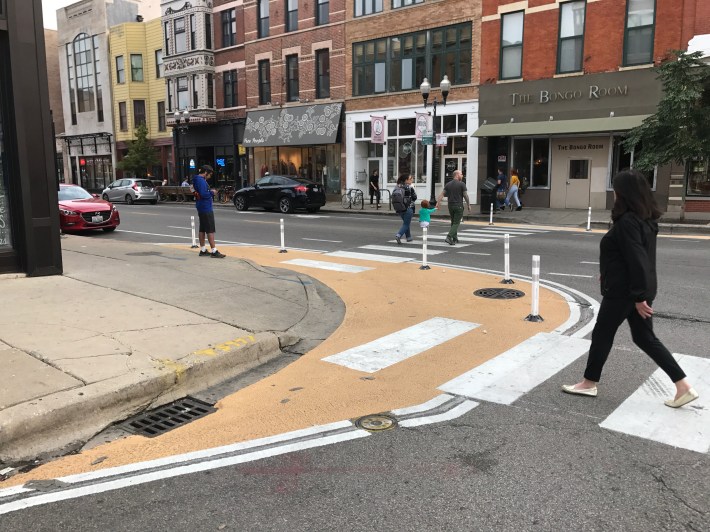
CDOT recently got data from the CTA on how the changes are affecting bus service. The final report should be released early next year.
MBAC attendees praised the project for making the area safer, but one man noted that some of the crosswalks are currently badly faded, including a new crossing that legalized a popular, but previously verboten, pedestrian shortcut across North/Damen/Milwaukee. CDOT engineer Dave Smith said he'd look into the issue.
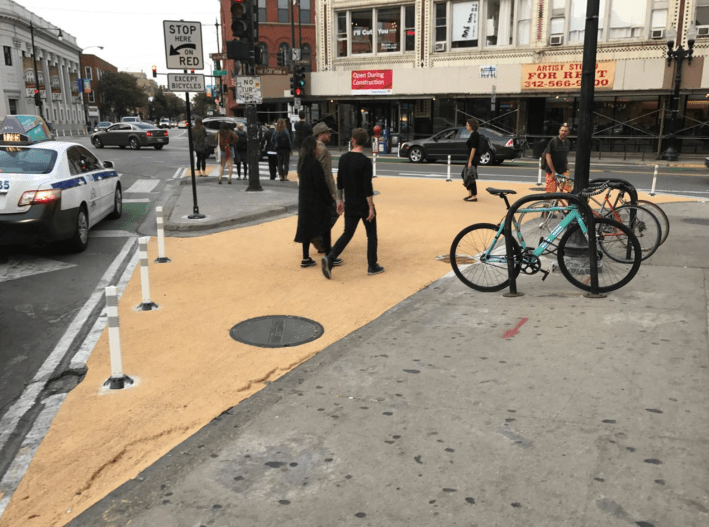
Attendee Elizabeth Tieri said that it seems like some motorists still aren't familiar with how they're supposed to operate around the unusual street features -- she's seen drivers attempt to make right turns into the closed slip lane at the south side of North/Damen/Milwaukee, for example. She asked what was being be done to educate the public about the project.
Hamilton responded that the department has tried to get the word out through outreach events with the city's Bicycling Ambassadors, and via the Wicker Park Bucktown Chamber of Commerce, which helped plan the project. CDOT Commissioner Rebekah Scheinfeld said she hopes that, as this kind of infrastructure becomes more common across the city, it will be "normalized" and drivers will get more comfortable with it.

